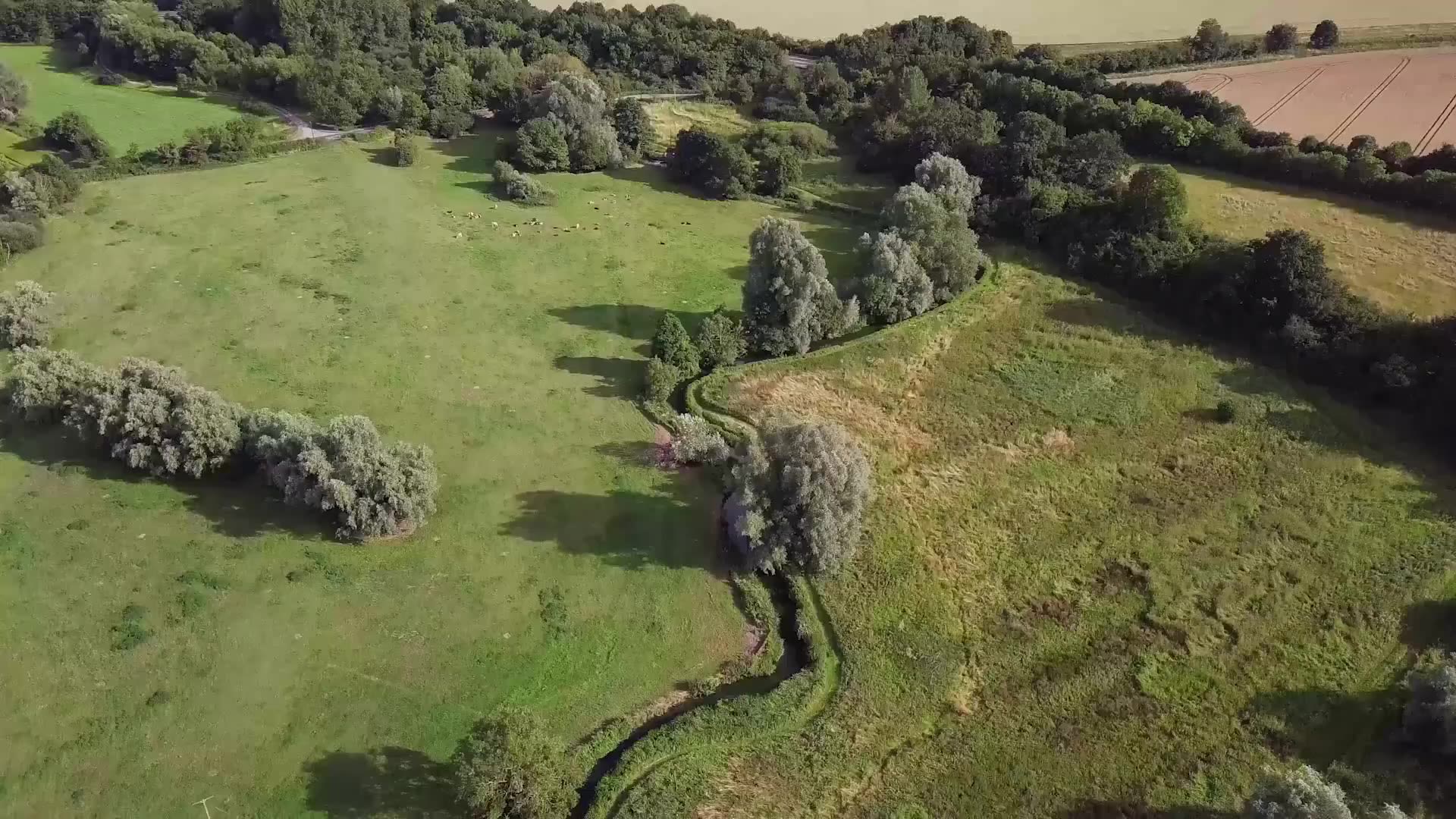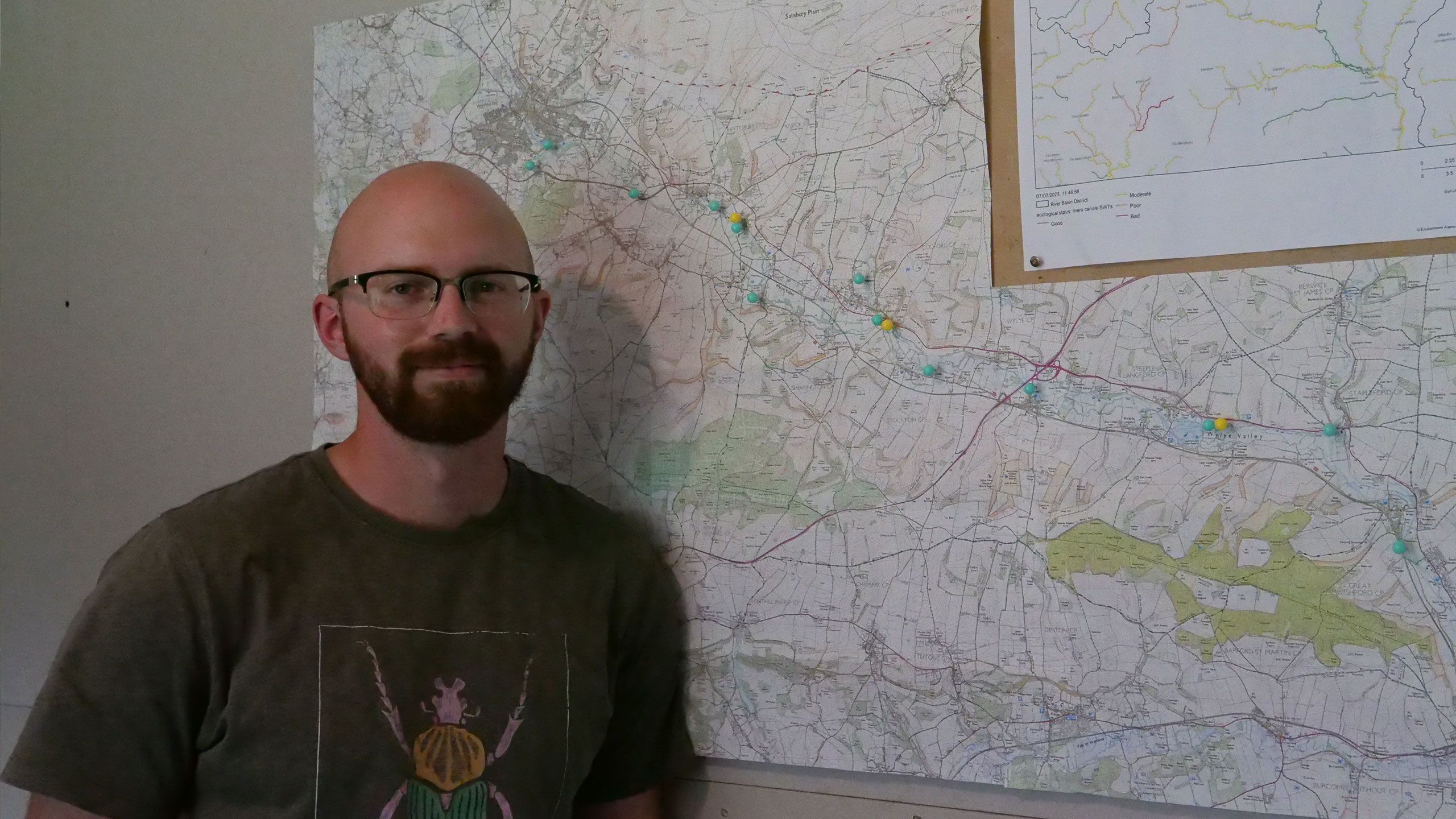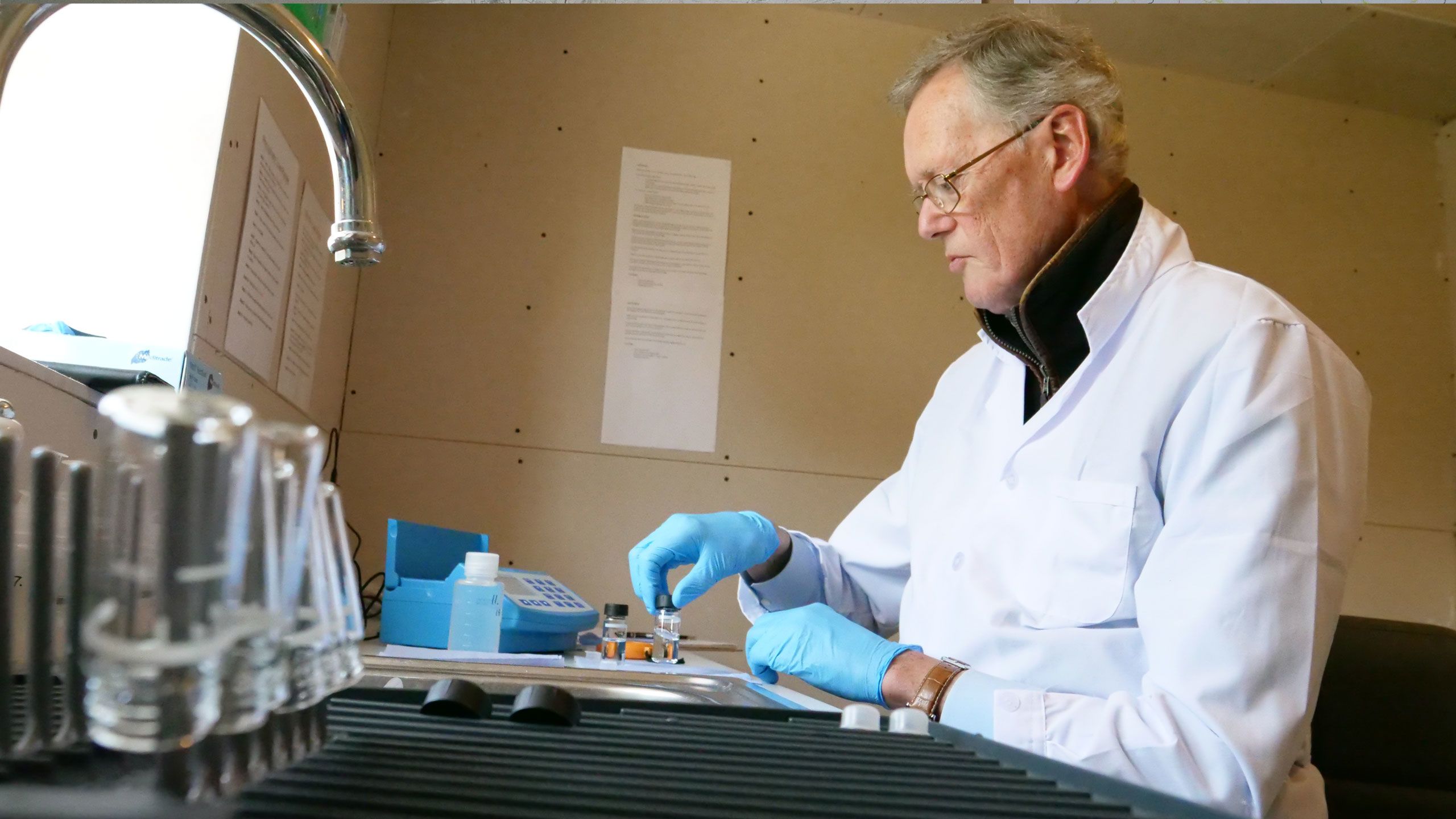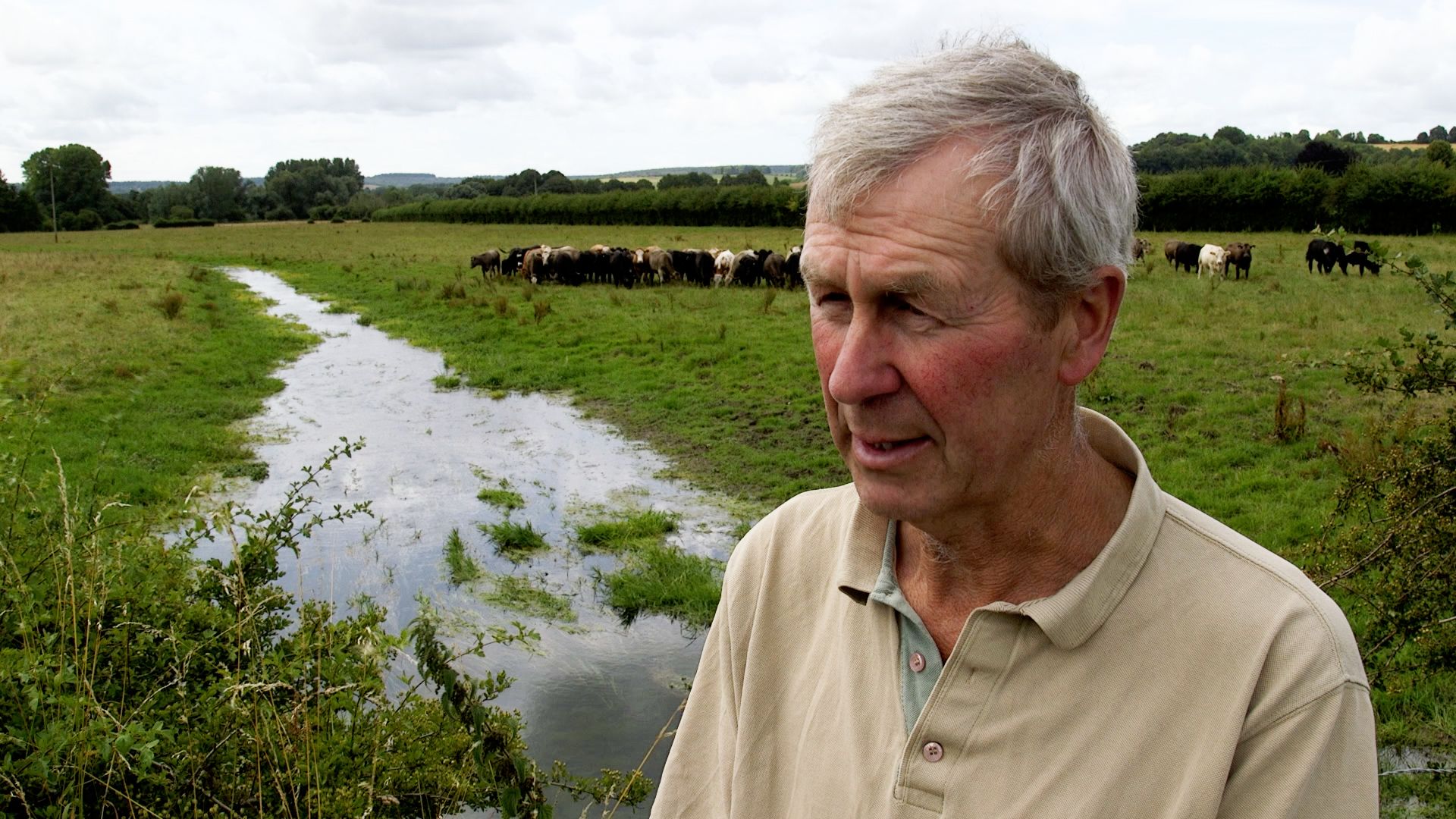What’s in the Wylye?
That’s the question that a Wiltshire-based cluster farmer group is attempting to answer through a pioneering project which seeks to understand pollution levels in the chalk stream that binds their group.

“This is about farmers controlling their own destinies – that’s the key”
Retired scientist and entomologist turned farmer Tim Palmer
With the majority of the world’s chalk streams found in England, a group of 34 farmers has made it their mission to protect and improve the one which flows through their land – namely the River Wylye.
Running through the chalk downlands of Wiltshire, the River Wylye is one of the chalk streams which forms part of the River Avon catchment, flowing up towards Warminster and down towards Salisbury.
Known to be a haven for a wide range of species and characterised by clear water which flows from underground chalk aquafers, the chalk stream has become a focal point for the Wylye Valley Farmers, leading them to launch their ‘What’s in the Wylye?’ initiative.
Led by member Josh Stratton and with support from the GWCT (Game and Wildlife Conservation Trust), the group has set up a system of water testing, where samples are collected weekly from 17 sites and tested for phosphate and nitrate levels using a lab-grade photometer.
Samples are gathered by members of the cluster on a rota and taken to be tested in the group’s laboratory which sits in a former dairy unit on member Jonathan Jardine Paterson’s land.
Working out how to stop river pollution
“It’s all about cleaning the river,” says the group’s facilitator and ecologist Robin Leech. “We’re working towards building a picture of how those nutrients are getting into the river and that involves working out where it’s coming from, how much is getting in and why, and then through that we can work out how to stop it.”
Members of the cluster group take water samples back to the lab and use the photometer to test for phosphates and nitrates. Samples are collected weekly from 17 sites across the river.
Robin cites the group’s inspiration as having come from the experience of another cluster group who carried out their own testing in the River Wensum. “They were facing pressure because of the high phosphate levels, which is why they were doing the testing. We decided we wanted to go down the same process.
“We want to directly look at our impact and how we’re affecting the water quality and solve it before it becomes a problem.”

Group facilitator for the Wylye Valley Farmers and ecologist, Robin Leech
Group facilitator for the Wylye Valley Farmers and ecologist, Robin Leech
With the majority of the world’s chalk streams found in England, a group of 34 farmers has made it their mission to protect and improve the one which flows through their land – namely the River Wylye. Running through the chalk downlands of Wiltshire, the River Wylye is one of the chalk streams which forms part of the River Avon catchment, flowing up towards Warminster and down towards Salisbury.
Known to be a haven for a wide range of species and characterised by clear water which flows from underground chalk aquafers, the chalk stream has become a focal point for the Wylye Valley Farmers, leading them to launch their ‘What’s in the Wylye?’ initiative.
Led by member Josh Stratton and with support from the GWCT (Gaming and Wildlife Conservation Trust), the group has set up a system of water testing, where samples are collected weekly from 17 sites and tested for phosphate and nitrate levels using a lab-grade photometer.
Samples are gathered by members of the cluster on a rota and taken to be tested in the group’s laboratory which sits in a former dairy unit on member Jonathan Jardine Paterson’s land.
Working out how to stop river pollution
“It’s all about cleaning the river,” says the group’s facilitator and ecologist Robin Leech. “We’re working towards building a picture of how those nutrients are getting into the river and that involves working out where it’s coming from, how much is getting in and why, and then through that we can work out how to stop it.”
Robin cites the group’s inspiration as having come from the experience of another cluster group who carried out their own testing in the River Wensum. “They were facing pressure because of the high phosphate levels, which is why they were doing the testing. We decided we wanted to go down the same process.
“We want to directly look at our impact and how we’re affecting the water quality and solve it before it becomes a problem.”
Farmers controlling their destinies
“The data has to be robust,” explains retired scientist and entomologist turned farmer Tim Palmer as he sets up the lab ready for another day’s testing. “The GWCT has been absolutely central to this whole effort – they provide scientific expertise and river scientists who know exactly how to do this work so we farmers can be trained up and provide high quality data.”
“Farmers can be part of the problem but certainly not the whole problem. The difference here is that we can identify the problem and do something about it without waiting for someone else to tell us.
“If we can get this right by the work we’re doing in this laboratory then, my gosh, we’ll have made a contribution. This is about farmers controlling their own destinies – that’s the key.”
In addition to the regular testing, the group is shortly due to begin sediment fingerprint testing which Robin says will give “direct results” allowing them to link a single field to any sediment found in the river.
The cluster has been running for five years now and has collaborated with organisations such as the Wessex Rivers Trust and Rothamsted Research, with funding from the Countryside Stewardship Facilitation Fund, Farming in Protected Landscapes programme, as well as contributions from the Fishmongers Livery Company and Codford Biogas.

Farmers controlling their destinies
“The data has to be robust,” explains retired scientist and entomologist turned farmer Tim Palmer as he sets up the lab ready for another day’s testing. “The GWCT has been absolutely central to this whole effort – they provide scientific expertise and river scientists who know exactly how to do this work so we farmers can be trained up and provide high quality data.”
“Farmers can be part of the problem but certainly not the whole problem. The difference here is that we can identify the problem and do something about it without waiting for someone else to tell us.
“If we can get this right by the work we’re doing in this laboratory then, my gosh, we’ll have made a contribution. This is about farmers controlling their own destinies – that’s the key.”
In addition to the regular testing, the group is shortly due to begin sediment fingerprint testing which Robin says will give “direct results” allowing them to link a single field to any sediment found in the river.
The cluster has been running for five years now and has collaborated with organisations such as the Wessex Rivers Trust and Rothamstead Research, with funding from the Countryside Stewardship Facilitation Fund, Farming in Protected Landscapes programme, as well as contributions from the Fishmongers Livery Company and Codford Biogas.

At the heart of the group is a shared ethos of wanting to “leave the land in a better place when we retire than when we started here,” as one member, Chris Wheatley-Hubbard, puts it.
“Initially we were quite sceptical about joining as a lot of people say it stops you operating as an individual business but that’s really not the case. Having that reassurance from your own peer group is essential. You often achieve more positive change when you learn from your peers, people who speak the same language as you. Having the ability to have that conversation honestly and openly is, I think, the biggest catalyst to effecting change.”
Fellow member Henry Collins describes the cluster group as “community-led” and inclusive, with members ranging from smaller enterprises around 3.5 hectares in size, to others numbering up to 2,500 hectares, with the group covering 12,000 hectares in total. “It’s also been good fun!” Henry adds.
“Farmers can actually go out there and do it in the way that almost no one else can – the solution is so much in their hands.”
Solution lies in farmers’ hands
If successful, the GWCT plans to roll out the initiative across other farmer clusters within the Hampshire-Avon catchment which make up the EFG (Environmental Farmers Group) - an environmental cooperative set up to help its members to access natural capital markets to fund its three core aims of nature recovery, climate change mitigation and cleaner rivers.
Blended funding
So far, a lot of voluntary work has gone into the What’s in the Wylye initiative, but it will form part of the larger Wylye Chalk Stream Project, which was recently awarded a Landscape Recovery grant, part of the governments ELMs (Environmental Land Management Schemes), after a successful joint bid by Wylye Valley Farmers, Wiltshire Wildlife Trusts, and Wessex Rivers Trust.
The funding means the conservation focus can be expanded from the river to the surrounding farmland and it will facilitate the ecological survey work required to develop a landscape-scale nature recovery plan and natural capital valuation.
The aim will then be to attract investment from the private sector through offset markets and corporate Environmental Social Governance to help pay farmers for habitat and water quality improvement measures.
This new revenue stream will come via the wider EFG.
“It’s wonderful to see that what started as a chance remark by one farmer and something we were able to help develop, take off like it has.
Since it was launched last year by farmers in Hampshire and Wiltshire, the EFG has undergone rapid growth. More farmer clusters in Northants and Northern Lincs have joined and it is set to expand west to Dorset, Somerset and Devon, south to the Isle of Wight and east to West Sussex.
A sister environmental cooperative PEF (Peakland Environmental Farmers) has been launched in Derbyshire and another, SWEF (Swaledale & Wensleydale Environmental Farmers), is in the process of being established in Yorkshire. Together they represent 570 farmers and cover over 580,000 acres, 2.9% of England’s farmed area.
The intention is to roll out the water testing initiative to other catchments within the EFG. Use of the lab has already been offered to neighbouring clusters and Robin has visited other groups of farmers in the Avon catchment including the Nadder and the Ebble to demonstrate the testing.
Teresa Dent, CEO of the GWCT, has been the driving force behind the concept of farmer clusters and is co-founder of the EFG, having secured funding for the initial set up of the testing facility.
“What’s fascinating is that individual farmers will understand for the first time what their water quality is like and how management directly affects that,” says Teresa. “It’ll be really interesting to see how they respond to that knowledge and start to manage their farms differently on the strength of that.
“The farmers are taking a risk because we don’t know what they’ll find. The word trust is so important and I think the way you generate that trust is to give farmers the confidence to solve those problems rather than be prosecuted for them.”
Speaking on the success of the farmer clusters, Teresa highlights the importance of a “sense of joint endeavour” to achieve environmental outcomes. “It’s wonderful to see that what started as a chance remark by one farmer and something we were able to help develop, take off like it has.
“Farmers have got such a lot of fun and pride out of joining the clusters, even going on to develop lapwing and nightingale envy. I’ve had farmers say to me, ‘How come my neighbour has got lapwings and I haven’t?’ ‘How come they’ve got harvest mice and I haven’t?’ These are really powerful drivers for wildlife recovery.
“Farmers can actually go out there and do it in the way that almost no one else can – the solution is so much in their hands.”
At the heart of the group is a shared ethos of wanting to “leave the land in a better place when we retire than when we started here,” as one member, Chris Wheatley-Hubbard, puts it.
“Initially we were quite sceptical about joining as a lot of people say it stops you operating as an individual business but that’s really not the case. Having that reassurance from your own peer group is essential. You often achieve more positive change when you learn from your peers, people who speak the same language as you. Having the ability to have that conversation honestly and openly is, I think, the biggest catalyst to effecting change.”
Fellow member Henry Collins describes the cluster group as “community-led” and inclusive, with members ranging from smaller enterprises around 3.5 hectares in size, to others numbering up to 2,500 hectares, with the group covering 12,000 hectares in total. “It’s also been good fun!” Henry adds.
“Farmers can actually go out there and do it in the way that almost no one else can – the solution is so much in their hands.”
Solution lies in farmers’ hands
If successful, the GWCT plans to roll out the initiative across other farmer clusters within the Hampshire-Avon catchment which make up the EFG (Environmental Farmers Group) - an environmental cooperative set up to help its members to access natural capital markets to fund its three core aims of nature recovery, climate change mitigation and cleaner rivers.
Blended funding
So far, a lot of voluntary work has gone into the What’s in the Wylye initiative, but it will form part of the larger Wylye Chalk Stream Project, which was recently awarded a Landscape Recovery grant, part of the governments ELMs (Environmental Land Management Schemes), after a successful joint bid by Wylye Valley Farmers, Wiltshire Wildlife Trusts, and Wessex Rivers Trust.
The funding means the conservation focus can be expanded from the river to the surrounding farmland and it will facilitate the ecological survey work required to develop a landscape-scale nature recovery plan and natural capital valuation.
The aim will then be to attract investment from the private sector through offset markets and corporate Environmental Social Governance to help pay farmers for habitat and water quality improvement measures.
This new revenue stream will come via the wider EFG.
“It’s wonderful to see that what started as a chance remark by one farmer and something we were able to help develop, take off like it has.
Since it was launched last year by farmers in Hampshire and Wiltshire, the EFG has undergone rapid growth. More farmer clusters in Northants and Northern Lincs have joined and it is set to expand west to Dorset, Somerset and Devon, south to the Isle of Wight and east to West Sussex.
A sister environmental cooperative PEF (Peakland Environmental Farmers) has been launched in Derbyshire and another, SWEF (Swaledale & Wensleydale Environmental Farmers), is in the process of being established in Yorkshire. Together they represent 570 farmers and cover over 580,000 acres, 2.9% of England’s farmed area.
The intention is to roll out the water testing initiative to other catchments within the EFG. Use of the lab has already been offered to neighbouring clusters and Robin has visited other groups of farmers in the Avon catchment including the Nadder and the Ebble to demonstrate the testing.
Teresa Dent, CEO of the GWCT, is the driving force behind the concept of farmer clusters and is co-founder of the EFG, having secured funding for the initial set up of the testing facility.
“What’s fascinating is that individual farmers will understand for the first time what their water quality is like and how management directly affects that,” says Teresa. “It’ll be really interesting to see how they respond to that knowledge and start to manage their farms differently on the strength of that.
“The farmers are taking a risk because we don’t know what they’ll find. The word trust is so important and I think the way you generate that trust is to give farmers the confidence to solve those problems rather than be prosecuted for them.”
Speaking on the success of the farmer clusters, Teresa highlights the importance of a “sense of joint endeavour” to achieve environmental outcomes. “It’s wonderful to see that what started as a chance remark by one farmer and something we were able to help develop, take off like it has.
“Farmers have got such a lot of fun and pride out of joining the clusters, even going on to develop lapwing and nightingale envy. I’ve had farmers say to me, ‘How come my neighbour has got lapwings and I haven’t?’ ‘How come they’ve got harvest mice and I haven’t?’ These are really powerful drivers for wildlife recovery.
“Farmers can actually go out there and do it in the way that almost no one else can – the solution is so much in their hands.”

What is a farmer cluster?
The idea of farmer clusters was first developed by the GWCT in association with Natural England following government plans to create 12 nature improvement areas in 2012, only one of which was farmer led – the Marlborough Downs nature improvement area.
Henry explains more about the farmer cluster
This led to the establishment of the first cluster in 2013 with Rob Shepherd, the now leader of the Allenford farmer cluster.
What started as a meeting around Rob’s dining room table with his neighbours since led to the first pilots of more cluster groups in partnership with Defra and Natural England.
Since then, more than 100 groups have been formed with the aim of delivering landscape-scale conservation.
Hear from Jonathan on farmer clusters
What now?
Do you want to explore environmental markets?
Environmental markets are a potential source of diversified income but finding the right agreement and making sure potential risks are understood is crucial. Read Environmental markets – are they right for you? for more information.
Check out the NFU’s sector resilience plans
Launched at the NFU Conference 2023, our sector resilience plans map out our board priorities and asks of government to support climate-friendly agriculture and improve business resilience. Read Climate-friendly farming, building business resilience.
NFU members contact CallFirst
If you are interested in information on farmer clusters contact NFU CallFirst on 0370 845 8458 today and a member of the team will send you information on farmer clusters.
Help shape NFU environmental policy
We want farmers and growers to be confident in building climate-friendly, resilient farming businesses while looking after the environment. If you are an NFU member join our environment and climate community and have your say on NFU policy.












